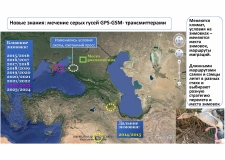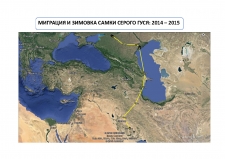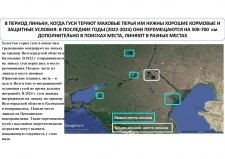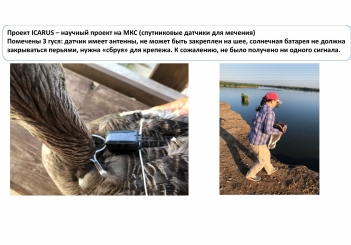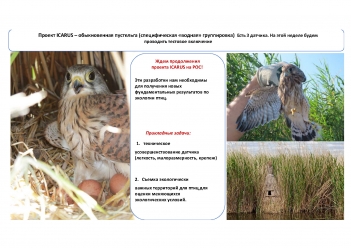On the 5th of August, a scientific-practical seminar with participation of specialists of Gagarin Research & Test Cosmonaut Training Center (GRTCTC) and cosmonauts of Roscosmos was held at MMBI. At the seminar Principal Researcher Professor Professor Natalya Lebedeva made a report on the remote study of birds in the Azov-Black Sea and Caspian regions of Russia within the framework of the ICARUS programme in cooperation with cosmonauts of Russian segment of the International Space Station. The essence of the project is in using satellite remote monitoring sensors that are installed directly on birds (e.g. grey geese or common kestrels) to track the migration routes of birds. The project is important for obtaining new fundamental knowledge on bird ecology. Its practical significance can hardly be overestimated, as in changing ecological conditions it is becoming more difficult for birds to find moulting and wintering sites, they return several times to breeding sites and back, move several hundred kilometres further in search of a place, and moult in different places. As Greylag Geese lose their flight feathers during the moulting period and need good foraging and protective conditions, such energy-intensive movements may cause increased mortality of birds.
During the report Natalia Viktorovna told about the problems and prospects of the project implementation. Initially several greylag geese were tagged with satellite sensors, but not a single signal from the sensors was received, while installation of these sensors on birds is a complicated and labour-intensive process, during which the birds experience severe stress. Denis Matveev, head of the department of GRTCTC, test cosmonaut of Roscosmos, who also made a report at the seminar, confirmed that there were indeed difficulties and problems with these sensors. Denis expressed great hope for the Russian Orbital Space Station, which is currently under design and is scheduled for launch in 2027. Its angle of inclination will make it possible to probe the entire territory of Russia, which will significantly expand the possibilities of solving remote environmental monitoring tasks.
According to the latest information from Professor Natalia Lebedeva, the sensors will be installed on several individuals of a specific ‘aquatic’ group of Common Kestrel. At present, their test activation and verification of their work is being carried out. On the Russian segment of the ISS signals from two of the three sensors were registered. Next year it is planned to use these sensors to mark birds on nests. Natalya Viktorovna expresses her gratitude to Russian cosmonauts who transmit valuable information directly from the ISS.
